How to Sit
Lauren Jurgensen
What does Zen meditation involve?
(Hint: We promise that it’s easier and more straightforward 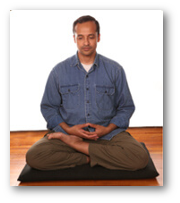 than an explanation like this makes it look, but there are a few guidelines we’d like to bring to your attention now so that you know what to expect!)
than an explanation like this makes it look, but there are a few guidelines we’d like to bring to your attention now so that you know what to expect!)
1. Sitting.
Depending on your preference, you may sit on a chair or bench, or using a pillow/folded blanket. The three important factors to remember when sitting are (1)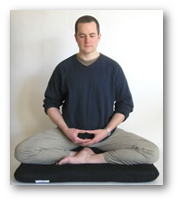
- good posture (your back should be upright and straight, but not to the point of discomfort - an extra pillow to help lift your lower back will provide lumbar support),
- keep eyes open, with gaze low to the ground, about 2-3 feet in front of you, and
- remember, it’s only sitting!
2. Breathing.
Once you’re seated, just sit. And breathe. When learning, many prefer to count their breaths (1, 2, 3 … 10) in sets of 10 and then start over. If you lose track of your count or your mind wanders, that’s okay! Welcome to meditation! Just keep sitting and start over again from 1.
Note: We don’t do any deep, deep breaths (although you can 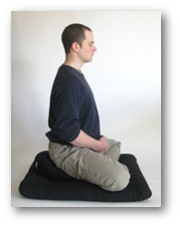 if you’d like). This is like everyday breathing, except you’re now becoming more mindful of your breaths.
if you’d like). This is like everyday breathing, except you’re now becoming more mindful of your breaths.
3. This is not a guided meditation.
Zen meditation is done in silence, but we’ll still be there to help you through the steps!
4. Remember, we’re just sitting.
That’s what meditation is. The path is the goal - in other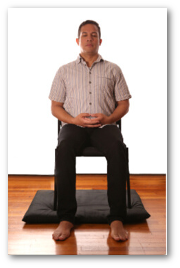 words, it’s the practice of meditation that is important. Don’t worry about achieving a goal, or beat yourself up if your mind turned to your grocery list or what a friend said to you last week. As you breathe, just sit and practice on being aware of your surroundings. When your mind turns to thoughts, stories, or worries, that’s okay. Just remain aware, and go back to counting: “1, 2, 3, 4 … “
words, it’s the practice of meditation that is important. Don’t worry about achieving a goal, or beat yourself up if your mind turned to your grocery list or what a friend said to you last week. As you breathe, just sit and practice on being aware of your surroundings. When your mind turns to thoughts, stories, or worries, that’s okay. Just remain aware, and go back to counting: “1, 2, 3, 4 … “
Zazen - seated meditation
While standing, a group member will ring the singing bell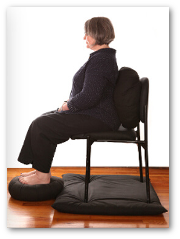 (a sound that is similar to a gong) and we will all bow at the same time to our chair or pillow. This is to thank and show respect to the the chair or pillow for giving us a place to meditate.
(a sound that is similar to a gong) and we will all bow at the same time to our chair or pillow. This is to thank and show respect to the the chair or pillow for giving us a place to meditate.
After we’ve bowed to our pillow/chair, we’ll turn back to the group. A group member will ring the singing bell a second time, and we will all bow to each other. This is to thank each other (the sangha, or group) for sharing in this meditation together.
Once we’ve bowed to each other, take your sitting position facing the wall. The bell will ring again and you’ll begin to meditate.
The first meditation session ends when the singing bowl has rung.
Kinhin - walking meditation
We’ll then stand and form a line, and begin our walking meditation in a clockwise direction. One group member leads the circle, as we all walk with slow, purposeful steps. During this time, focus on your breath, but also focus on your body and its movements as you take each step.
Walking meditation concludes when the group member leading the walk claps together two woodblocks.
While still standing, we’ll do exactly as we did before our first seated meditation. The bell will ring, we then bow to our cushion. The bell will ring again and we’ll bow to one another. Resume your seated position meditation. The bell will ring to signal the conclusion of the second meditation.
At the end of our meditation, there will be time for questions, talk, reflections!